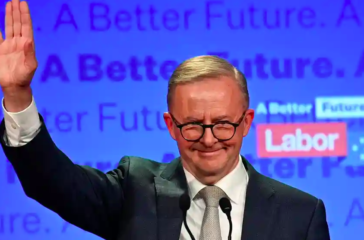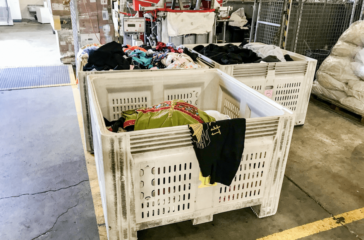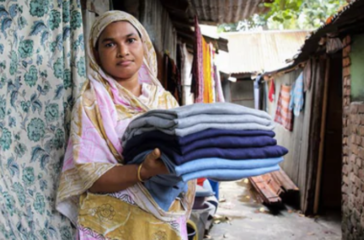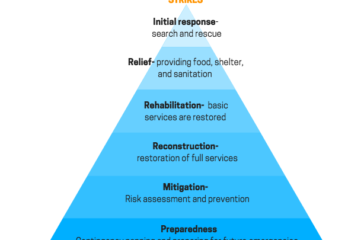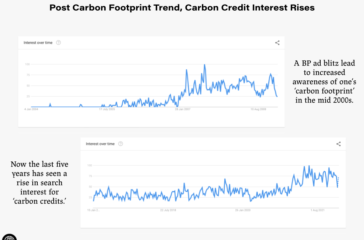Election Wrap: What TF Happened and Who TF is Our PM?
By HCN Political Editor Loughlin Patrick
Let out a weary sigh, Australia: the election’s over. Well, almost…
Last week’s advertising blackout was a relief for many, providing Aussies everywhere welcome respite from sea shanties and TV tanties. After weeks of press conference gaffes and debate night scraps, Saturday night was set to put an end to it all.
But even the best-laid schemes of mice and men often go awry.
I covered the election live for RMIT’s Swanston Gazette, armed with bar graphs and pie charts to call seats like an Aldi-knockoff Antony Green. Focusing on the micro — the individual results of seats — made it difficult to know who was actually winning on a macro scale.
This wasn’t helped by the fact that no one really was winning. Of course, there were some significant small wins, but things are more complicated than that. As a whole, how parties fared exists on a sliding scale from ‘complete wipeout’ to ‘escaped with the least scratches.’
To me, this is the most interesting election result we’ve had in decades! Your personal definition of interesting, as a hot and funny person who leads a richly rewarding life, may differ. So, after weeks of explaining election issues for keen podcast listeners, here’s one last breakdown of where the parties stand, just for you.
Labor: Winner? Sort of…
Some would say Labor were the most successful party this weekend, in light of their double-digit gain in seats. Others may disagree, citing the party’s 0.5% decline in primary votes. So let’s stay away from value judgments and stick with the facts.
Right now, Labor is the only party able to form a government. That’s the assumption everyone’s working from. Anthony Albanese was affirmed as Prime Minister on Monday before jetting off to Japan for international talks, and an interim cabinet of Labor MPs have been sworn in.
What we don’t know is what Labor’s government will look like after this interim stage. If they manage to win 76 lower house seats, that gets them over the line as a majority government and makes things a lot simpler. But another very possible scenario is Labor being forced to govern in minority.
If Labor can’t win control of the lower house, they’ll have to negotiate with the cross-bench, made up of a record number of minor parties and independents. It means Albanese may have to make concessions on key policies when negotiating with other MPs to ensure Labor maintains control.
One misstep that may cost Labor its’ shot at a majority government is the party’s loss of the previously safe seat of Fowler. Party officials chose to parachute in high-profile shadow minister Kristina Keneally, nixing a local candidate who’d already been pre-selected. Locals showed Labor how they felt about that with a double-digit swing which lost it the seat.
Independents: Teal Takeover!
If Labor can’t reach a majority, they’ll have to look to a dynamic range of independent candidates for parliamentary support. And right now, independents lead in ten lower house seats, setting up an incredibly large cross-bench for Labor to contend with.
Of those ten MPs, six new ‘teal’ independents will join two existing ones to make a team of eight teals wanting action on key election issues. So who are the teal independents and what do they want?
‘Teal’ refers to the colour used in the campaigns of many (but not all) independent candidates who ran in safe Liberal seats. That’s not all they have in common: many described themselves as socially liberal but economically conservative, positioning themselves as a centrist option to voters dissatisfied with the Liberals but who would rather die than vote Labor.
As independents, teal candidates campaigned with an eye to local issues, but many made two federal policies cornerstones of their campaigns. Lots of teals are keen for a federal ICAC, supporting a proposal written by O.G. teal MP Helen Haines, who won Indi in 2019. And many campaigned using funds from the Climate 200, an organisation advocating for greater climate action.
But there’s some ways the teals differ. During the election, Warringah MP Zali Steggall said she’d never negotiate with our ex-PM Scott Morrison in government, while new Goldstein MP Zoe Daniel left the door open. So while their colours and keystone policies are similar, the teals are still very much independent units and won’t hesitate to vote their conscience.
The Greens: A Queensland Greenslide?!
One party leader with no mixed feelings about the weekend’s election is Adam Bandt. The Greens’ leader was on a plane before lunchtime on Sunday, announcing to Twitter he was headed to “Greensland”.
There’s a reason Adam was so excited. Before this election, the Greens had just one lower house seat: Bandt’s in Melbourne. Melbourne’s long been a political stronghold for the party, but its attention had turned to Brisbane in recent months as campaigning ramped up.
Supporters say they knocked on tens of thousands of doors over the course of the campaign, concentrating their efforts in the three seats of Griffith, Ryan and Brisbane. They’ve now won the first two, and remain in contention for the third. That’s at least a tripling of the Greens’ lower house representation, despite just a 1.4 percent increase in primary vote share.
It’s an outcome that’s shocked many, as the Greens’ have a complicated relationship with Queensland as a state. The party’s last outing in the state centred around an infamous convoy led by former leader Bob Brown, which some political observers credit with sealing Labor’s defeat at the last election by getting farmers and miners in the regions off-side.
A subtler touch this time around allowed the Greens’ to successfully consolidate their efforts in three seats, allowing them to leverage their 10 per cent primary support in a targeted way. Party strategists will be looking to other capital cities to see if this is something that’s repeatable during the 2025 election campaign.
The Nationals: Trouble at the Top
Now let’s turn our attention from the left and centre to the right side of politics. It was definitely a disappointing weekend for those who hold conservative views, as the election brought the 9-year Abbott-Turnbull-Morrison Government to an end. But Nationals MPs have gone into this week with something to smile about.
The National party have long positioned themselves as representative of the regions, and the party’s targeted focus saw all 9 Nationals seats maintained. That’s despite a slide of 0.5 per cent in primary vote share amid challenges from independents. So, the Nationals are the only conservative party to keep their lower house representation going into our next parliament.
But despite the comparatively good news, some in the Nationals party room are getting antsy. Unlike the Liberal party, which have put protections in place against leadership spills to ensure continuity of leadership, the Nationals traditionally hold leadership spills after every single election. Normally the party leader is re-elected, but that may not be the case this time.
The current Nationals leader is Barnaby Joyce — of ‘Pistol and Boo’ fame — who ousted previous leader Michael McCormack last June. Now, McCormack is reportedly agitating to get his old job back, but there’s a desire among party members for a new face in the top job. That new face may be David Littleproud, who favours climate action more than Joyce.
While the Nationals’ good result is a key reason to keep Joyce as leader, some blame his criticism of net-zero policies for the Liberals’ losses in city seats. Electing Littleproud as leader may be a concession from the Nationals to rebuild the Coalition more broadly.
The Liberals: Washed Out
While it’s still not clear if Labor has won in its own right, it’s definitely clear the Liberals lost out this weekend. The party’s primary vote share dropped 4.3 percent, with voters swinging away to Labor, the Greens and independent challengers in key city seats. There’s now no way for the Liberals to form government, even with the Nationals’ support.
The election also saw high-profile scalps, with the Liberals losing safe seats and high-profile ministers. After a gruelling campaign, Treasurer Josh Frydenberg wasn’t able to hang on to his seat of Kooyong in Melbourne. Minister for Indigenous Australians Ken Wyatt also lost his seat, this time to Labor.
But what about our now ex-PM? Scott Morrison was able to hold his seat of Cook, with a double-digit margin, successfully fending off a Labor challenger with a 5.8 percent swing. But he resigned as Liberal leader on Saturday night, delivering a tearful speech to churchgoers on Sunday before quietly shuffling off to the backbench.
Many blame Morrison for the Liberals’ election loss, critiquing his damaged personal brand. Morrison wasn’t able to get back into voters’ good books, despite bringing out his oft-mentioned wife Jenny as a “secret weapon” and apologising for being a “bulldozer” in the last week of the campaign.
This sets the stage for Peter Dutton to swoop in as the new party leader. He’ll keep the Liberals firmly on the right, to the dismay of MPs who’ve called for greater moderation.
The Anti-Vaxxers: A Jab Too Far
This leaves the conservative minor parties, who were hoping for a big election win after years of Covid lockdowns, restrictions and vaccine mandates. But after months of telling voters to “put the majors last”, big-spending failed to eventuate into results on election night.
The United Australia Party went into this election with one seat, after ex-Liberal MP Craig Kelly defected to the Clive Palmer-led party over disagreements over Covid vaccines. But Kelly lost his seat of Hughes on Saturday in a rare pick-up for the Liberals. That leaves the UAP with no lower house representation.
There’s also possibly bad news for One Nation, with leader Pauline Hanson at risk of losing her Queensland senate seat. Hanson, currently Covid-positive, also came out against Covid vaccines. But the Legalise Cannabis Party, who share that view, may be about to swipe her seat.
That’s it for now.
If you can’t get enough election analysis, head over to the HCN podcast feed on your preferred podcast platform for a 45-minute deep dive into the results and what they mean for each party, plus more analysis of our voting system. Follow the show and listen anytime on your preferred podcast platform.

